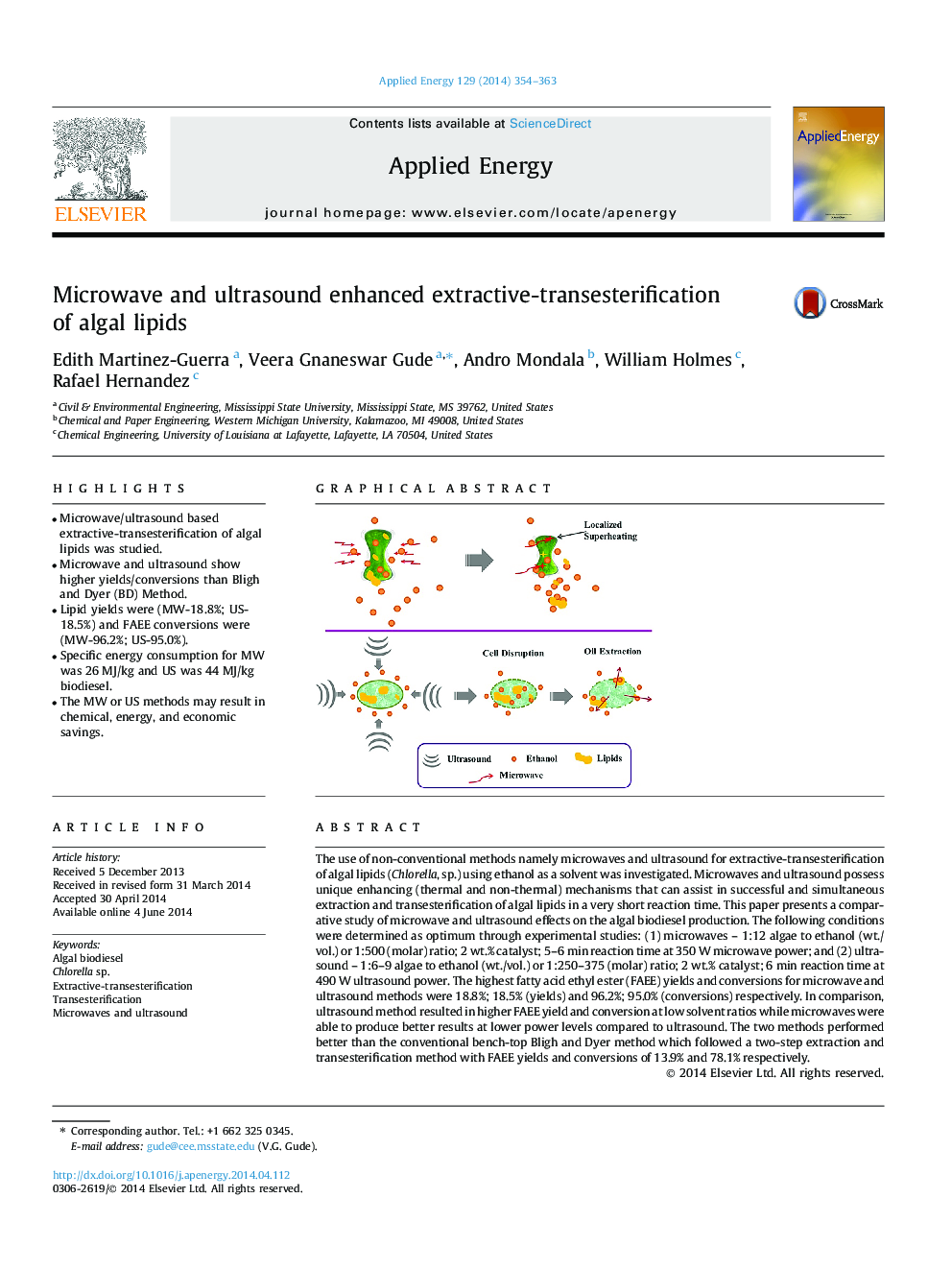| کد مقاله | کد نشریه | سال انتشار | مقاله انگلیسی | نسخه تمام متن |
|---|---|---|---|---|
| 242727 | 501897 | 2014 | 10 صفحه PDF | دانلود رایگان |
• Microwave/ultrasound based extractive-transesterification of algal lipids was studied.
• Microwave and ultrasound show higher yields/conversions than Bligh and Dyer (BD) Method.
• Lipid yields were (MW-18.8%; US-18.5%) and FAEE conversions were (MW-96.2%; US-95.0%).
• Specific energy consumption for MW was 26 MJ/kg and US was 44 MJ/kg biodiesel.
• The MW or US methods may result in chemical, energy, and economic savings.
The use of non-conventional methods namely microwaves and ultrasound for extractive-transesterification of algal lipids (Chlorella, sp.) using ethanol as a solvent was investigated. Microwaves and ultrasound possess unique enhancing (thermal and non-thermal) mechanisms that can assist in successful and simultaneous extraction and transesterification of algal lipids in a very short reaction time. This paper presents a comparative study of microwave and ultrasound effects on the algal biodiesel production. The following conditions were determined as optimum through experimental studies: (1) microwaves – 1:12 algae to ethanol (wt./vol.) or 1:500 (molar) ratio; 2 wt.% catalyst; 5–6 min reaction time at 350 W microwave power; and (2) ultrasound – 1:6–9 algae to ethanol (wt./vol.) or 1:250–375 (molar) ratio; 2 wt.% catalyst; 6 min reaction time at 490 W ultrasound power. The highest fatty acid ethyl ester (FAEE) yields and conversions for microwave and ultrasound methods were 18.8%; 18.5% (yields) and 96.2%; 95.0% (conversions) respectively. In comparison, ultrasound method resulted in higher FAEE yield and conversion at low solvent ratios while microwaves were able to produce better results at lower power levels compared to ultrasound. The two methods performed better than the conventional bench-top Bligh and Dyer method which followed a two-step extraction and transesterification method with FAEE yields and conversions of 13.9% and 78.1% respectively.
Figure optionsDownload as PowerPoint slide
Journal: Applied Energy - Volume 129, 15 September 2014, Pages 354–363
